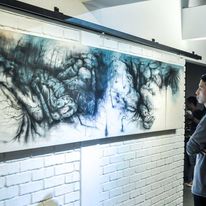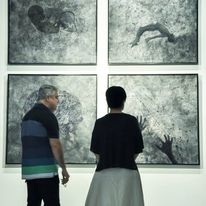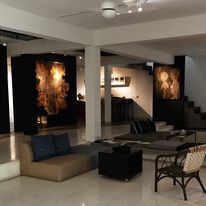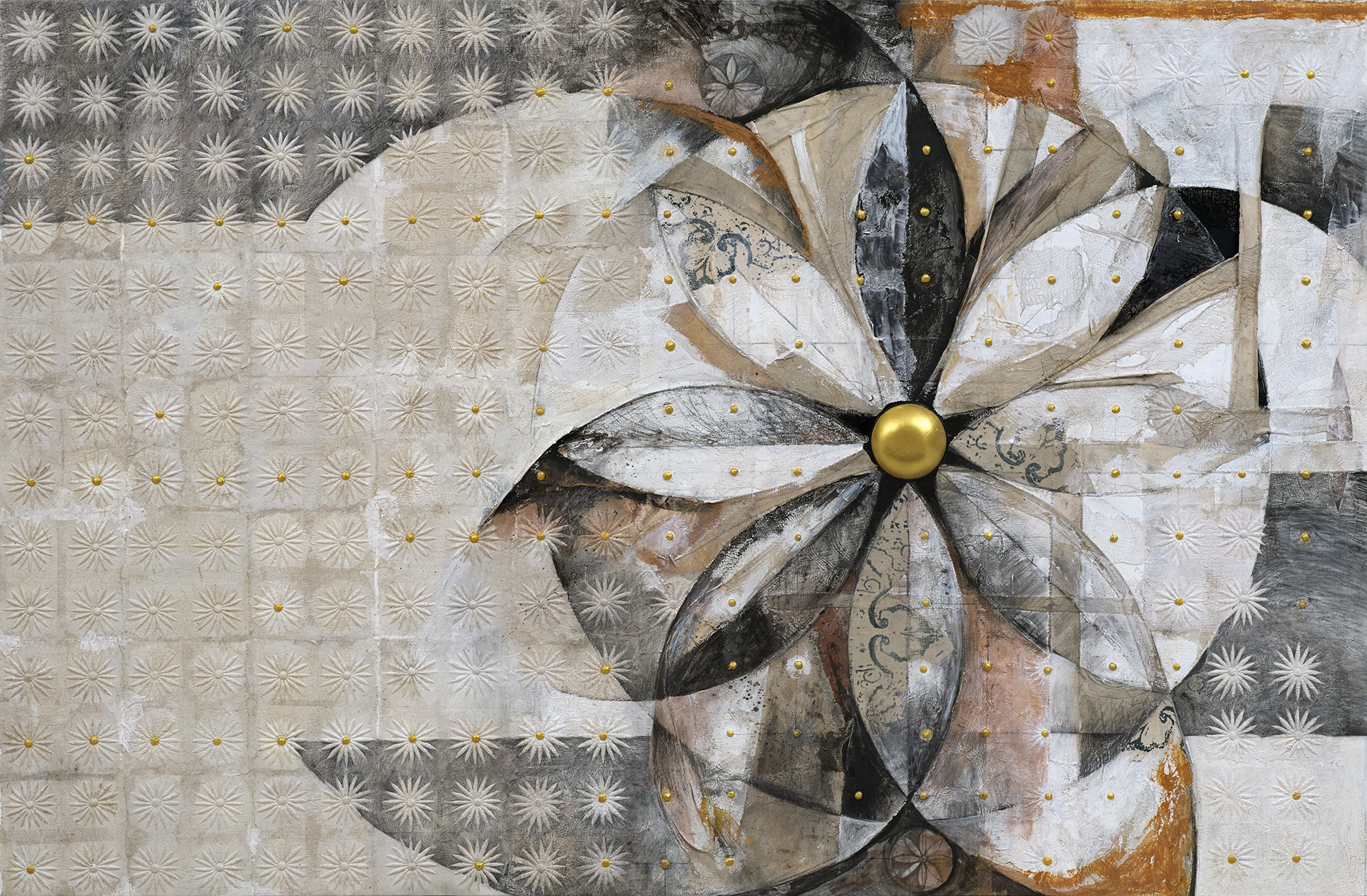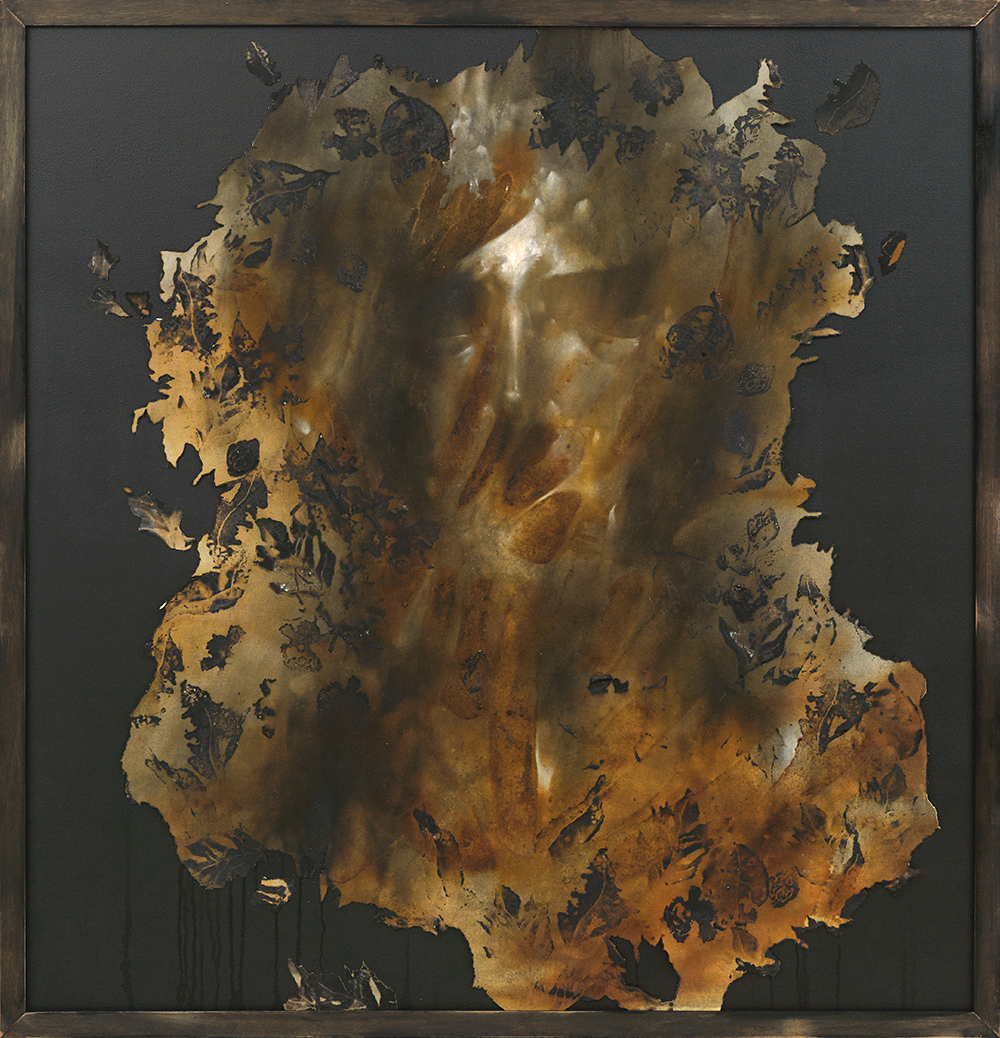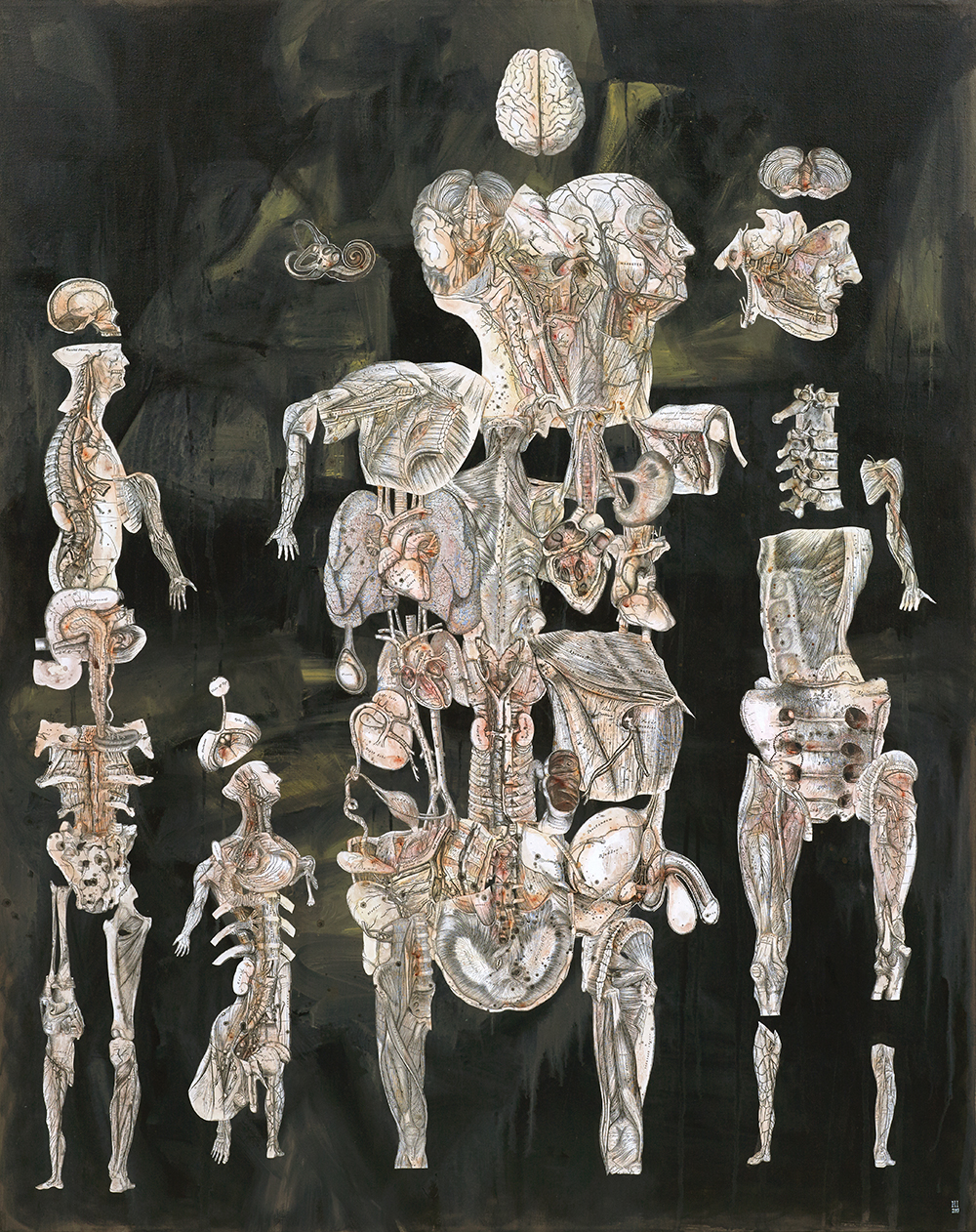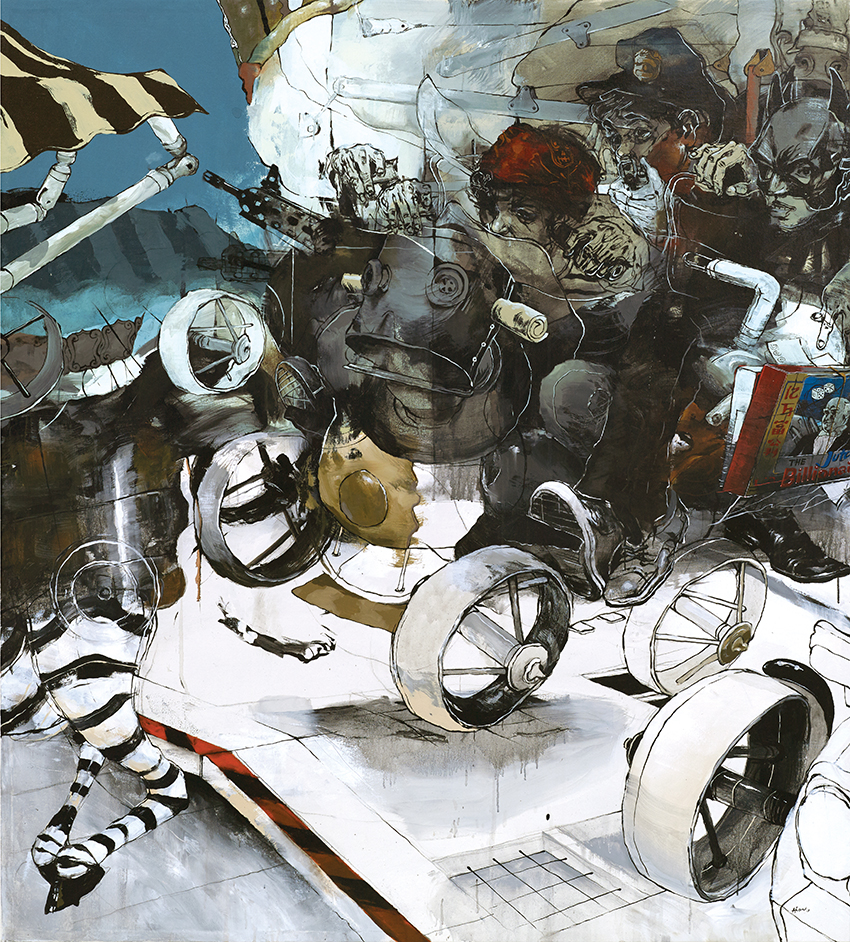Much Ado About Drawing
Group Exhibition:-
Faizal Suhif
Fauzin Mustafa
Haafiz Shahimi
Haslin Ismail
Husin Hourmain
Husin Othman
Khairul Izham
Masnoor Ramli Mahmud
Mohd Al-Khuzairie Ali
Mohd Bakir Baharom
8th September – 16th October 2017
Core Design Gallery, Subang Jaya
*Click on images to zoom in
Drawing out the Background
The role of drawing changed enormously in the 20th century (Duff & Davies, 2005), with drawing being no longer necessary or sufficient for attainment or acclaim in art school or the art-world. In the recent years, there has been a growing concern within the art ecosystem, which consists of the artists, collectors and academicians, regarding formalistic skills among younger artists. There has been anecdotal evidence indicating a deterioration in drawing abilities as well as an emphasis on them, despite it being one of the most fundamental skills in the practice of art.
The title Much Ado About Drawing parodies the famous Shakespeare’s play. There are two layers to this title. On one hand, it seems to imply that drawing should be a principal skill in a fine art artist – something given, thus there is no need to fuss over it. On the other hand, it seems to suggest that it is perhaps time to pay a little more attention to processes which up until now have been largely ignored, such as thinking and the practice of drawing. It is through Much Ado about Drawing that we hope to inspire academia and institutions to look more seriously into the research that will set the stage for future forums, symposiums and supporting exhibitions, promoting in depth exploration of the possibilities of thinking through drawing and its practice with knowledge.
Drawing on the Curatorial Direction
Much Ado About Drawing was not set up with any specific approaches of drawing in mind. Instead of presenting a preconception of how a drawing exhibition should be, artists from different genres of mixed media, painting, ceramic, printmaking, calligraphy and so on, were invited to surprise us with their unique interpretation of the idea of drawing. We’ve made many interesting discoveries in the final stages of the curatorial process through these interpretations; such as the reason and manner in which the concept of drawing is incorporated into their final artworks. They provide valuable insights that will be useful for future studies on this subject. This exhibition also prompted a great deal of research into the various theories of drawing, as well as the increasing concern regarding the drawing skills of artists everywhere. As mentioned earlier, this exhibition aims to spark awareness in various institutions and inspire academic forums as well as research to further discuss the importance of drawing within the context of Malaysian contemporary art.
Drawing the Different Theories and Findings
According to research on various drawing theories, I must say I concur with the statement “drawing is impossible to define” due to its rich etymological past. Some theories inquire into observational drawings while others explore drawing in broader views through performative or gestural drawing as well as the interpretation of drawing as visual thinking and situated cognition. One of the earliest and most well-known theories is observational drawing by the renowned art and social critic, John Ruskin. In his book published in 1857, Elements of Drawing, he advocates strongly the importance of capturing an observation with the naked eyes as it forces the eyes to capture details. John Berger also used a justification similar to that of John Ruskin (1857), who said “Drawing… forces the artist to look at the object in front of him, to dissect it in his mind’s eye and put it together again.” (Berger, 2005)
Faizal Suhif is among those who rely greatly on their cognitive recognition and memory in drawing. He immerses himself in his surrounding landscape, observing the tiniest details. In this close observation of things, he develops an appreciation for all his subjects of observation. One example he often quoted when he observes the details surrounding tiny termite mounds, he found the view to be as beautiful as a Chinese ink painting of mountainscape. Using this cognitive skill, he combines his observation and imagination of the landscapes into surreal pieces of drawing. Similarly Husin Othman and Khairul Izham also manifest their daily observations through the drawing of lines via situated cognition where they do drawings from their knowledge and their learning process often revolves around their surroundings, culture or even their social happenings. “A line implies the coming together of two planes, or any two things, or events, so every line is already charged with implication. We may not see the parts, but we can see their relationship within the line they share. the middle of one thing is often the edge of something else.” (Moore, 2011) In both artists, the expression of lines seems messy and ambiguous, which allows room for all kinds of interpretation and exploration. Most importantly, it promotes the birth of new ideas, a concept that can be found in Husin Othman’s Random Access Memory, where smaller imageries connect and intertwine with the bigger representational figures.
Drawing can be interpreted and responded to in many different ways other than observational drawing or even the ones demonstrated by the artists participating in this exhibition. It can be, and is, in fact, about many other things: ideas emerging through the drawing process, the manner in which the intensity of expressions changes the lines and form in drawing, the idea that drawing itself is a performative act or pure experimentation on different mediums.
One of the important aspects of drawing is, according to Fitch, “how ideas emerge through the drawing process”. For him, “drawing fleshes out thought” – it is a way of “seeing things that don’t exist yet”. (Fitch, 2011) Aku…dalam Mencari Rukun Working Drawings, the set of 28 drawing sketches on paper by Husin Hourmain is about capturing his thinking process, “First I think and then I draw my think.” (Gill, 1940). It was through the act of drawing that thoughts were allowed to manifest, he said and as his hand moved, he became increasingly conscious of those thoughts, which took shape on the canvas. The process was almost like a conversation between the artist and the drawing itself, bringing into consciousness ideas and thoughts not yet given to form. It is through these initial conceptual sketches that Husin Hourmain solidified the idea of his upcoming solo 2018 Aku… Dalam Mencari Rukun.
Drawing itself is a performative act, which transfers raw expressions of the mind to the gestural moves of the hands to mark the surface. “Intensity of feeling can be realized through intensity of form. Actions precede observation, observation precedes reflection, and reflection stimulates imagination, interpretation, and meaning.” (Moore, 2011) In the artworks of Haafiz Shahimi, the artist saw a representational figure emerging from the confluence of printed rust lines (he created rusted metal blocks to be printed on the surface of the canvas). The artist then proceeded to go into his unconscious mind to use gestural actions to mark the canvas with fire instead of controlling the way he draws. Subsequently after he sees the image forming from the accidental effects, he then slowly starts to “flesh” out the representational form on the artworks.
In New Zealand, the 2017 premier award for drawing was not one made with pencil, charcoal on paper or any other traditional medium for drawing; it was a carpet cut into straps. Is cutting drawing, or rather, is creating a three-dimensional installation with lines considered a part of drawing? Should drawing be recognised only in its traditional forms? Fauzin Mustafa believes that his drawing abilities have allowed him to form the moulds for his paper mache, which he collages on his canvas, and that even composing them is part of the formalistic aspects of drawing. Mohd Al-Khuzairie Ali too relied on his drawing abilities to form the moulds for his baby ceramic series. The process of drawing on ceramics and then glazing them is itself a challenging drawing exercise. Masnoor Ramli Mahmud also experiments his drawing abilities on an interesting medium like aluminium sheet.
Drawing the Conclusion
Drawing has been traditionally defined as a form of visual art where an artist uses various drawing instruments to mark paper or any other two-dimensional medium. In this Much Ado about Drawing exhibition, there are artists who interpret drawing through applying lines, space, perspective, form and proportion in their two-dimensional artworks. There are also artists who do not create the literal form of drawing but choose instead to express the idea through moulds of a print, ceramic or even the unconventional method of drawing via pyrography burning. The most important finding is that all the artists involved in this exhibition agree that drawing skill is the most fundamental process for the underlying development of one’s artistic and formalistic skills. Yet the ability to think through drawing and practice the skills with knowledge in this contemporary era is what differentiates drawing from being viewed or labelled traditionally as mere “craft” or “skill”. Instead drawing can be an intrinsic part of the complex and layered process of making an artwork, where the use of lines and marks on surfaces are ways of constructing ideas and simultaneously works as an avenue of artistic expressions.

